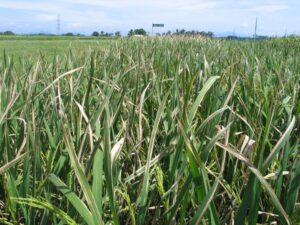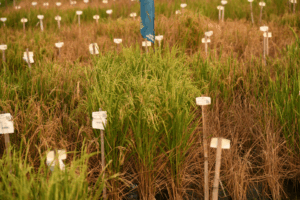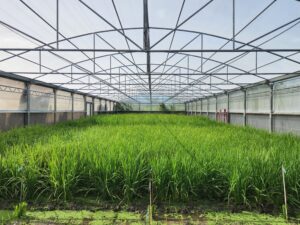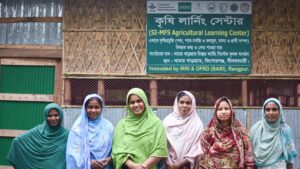Severe water shortage during the rice-growing season in the province of Sindh is forcing some rice farmers to sell their land to real estate developers below market prices.
Not a single acre of rice could be sown in Badin, Thatta, Sujawal, and Tando Muhammad Khan according to the head of the provincial Environment Ministry.
The minister blamed climate change and the inequitable distribution of irrigation water for the situation that he said could lead to a rice crisis in Sindh.
Read the story @Business Recorder
More on efficient use of water in rice production:
From Warige to WeRise: better water management is coming to rainfed rice areas of Indonesia
Serdang Village in Deli Serdang District is another rainfed area located in North Sumatera, a province on the northern tip of Sumatera Island. Unlike the farmers in Segala Anyar, the farmers in this village have shallow tube wells in their fields for supplementary irrigation during crop seasons. Despite the extra cost of fuel to operate water pumps, farmers can avoid drought stress during critical crop stages and aim for higher yields.
Why sustainable water management needs more than technologies
The sustainable use of fresh water in agriculture is a growing concern worldwide. More than 2.7 billion people must cope with less water than they need for at least one month every year. Globally, agriculture uses approximately 70% of available freshwater—and 40% of this is used for rice cultivation alone. With rice being a staple food for half of humanity, more than 3 billion people rely on this grain for their main source of livelihood. Therefore, enhancing rice production—and looking for ways to grow it with less water—will be essential to ensure food security in Asia, if not the world.
Disentangling challenges to scaling alternate wetting and drying technology for rice cultivation: Distilling lessons from 20 years of experience in the Philippines
The review’s findings point to the importance of rethinking the boundaries and assumptions of the scaling theory of change for alternate wetting and drying; this requires proper consideration of the institutional and irrigation systems. There is a scaling gap in understanding and learning the contexts in which AWD could be successful and what it will take to succeed in most gravity-based irrigation systems.









